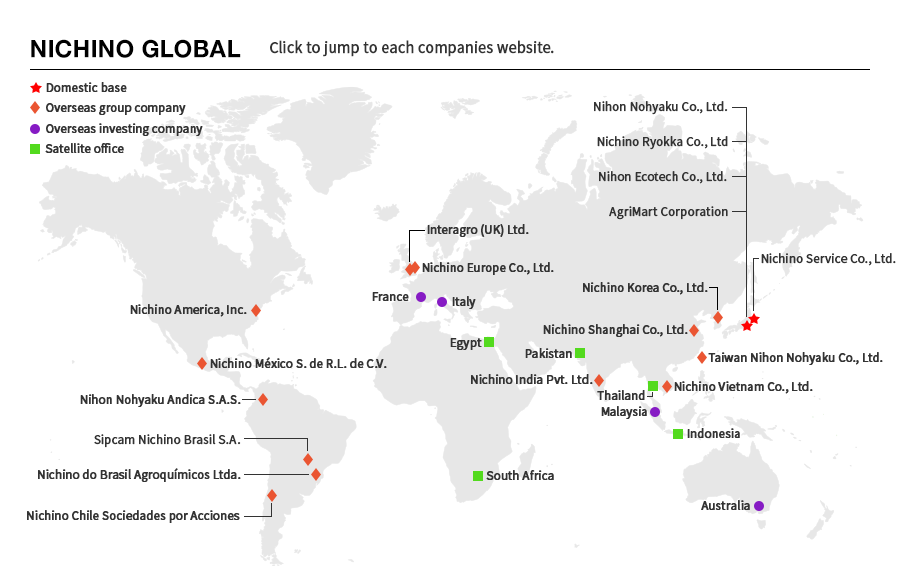Risk Management
- Approach to and Promotion System for Risk Management
- Risk Management Initiatives
- Information Security
- Enhancing BCP (in Japan: an earthquake directly hitting Tokyo, natural disasters, pandemics)
- Response to TCFD Recommendations
Approach to and Promotion System for Risk Management
Recognizing that risk management is an important part of management, the Group takes appropriate measures to prevent potential risks in our business activities and focuses on preventing losses caused by the materialization of risks, as far as possible.
Nihon Nohyaku has established a basic policy and management system for risk management for the entire Group in the “Risk Management Regulations.” The Risk Management Committee, composed of full-time Directors or Executive Officers who supervise each department, identifies risks, prevents risks from materializing, and takes measures to minimize the impact of risks that have materialized.
Risk Management Initiatives
In principle, the Risk Management Committee holds a regular committee meeting in March every year to summarize the activities of the year and decide on policies for the next fiscal year. Based on these decisions, we hold workplace meetings (twice a year) and a group council within Group companies (once a year). At the first workplace meeting in FY2023, we worked to enhance employees’ understanding of management risks and company-wide risks, and to improve risk management awareness. At the second meeting, we conducted training on human rights violation risks and held discussions aimed at updating information on possible risks faced by each workplace. This led to the identification of new risks, including fraud risks.
Information Security
In conducting its business activities, the Group strives to properly manage the personal information of stakeholders (customers, business partners, shareholders, officers and employees, etc.) as well as confidential information related to sales and research and development. We have taken every precaution in our management system, but in the unlikely event that this information leaks outside the company, it could lead to a loss of social credibility for the Group, which could have an adverse effect on our business performance and financial position. To prevent such an incident from occurring, the Group has established an information sharing system for information security, as well as internal regulations related to information management.
By implementing the PDCA cycle and regularly reviewing and sharing information, we strive to strengthen our management system on a daily basis so as to keep up with the latest trends.
Enhancing BCP (in Japan: an earthquake directly hitting Tokyo, natural disasters, pandemics)
We have established the NICHINO Group Emergency Response Regulations and a system to establish a controlled organization to respond quickly and accurately in the event of an emergency such as a disaster or pandemic, or when such an event is predicted.
In addition, we have established guidelines for large-scale disaster countermeasures at each of our major bases, and prepared action standards and a business continuity plan (BCP) in the event of large-scale disasters such as an earthquake directly hitting Tokyo or natural disasters. These guidelines and plans are reviewed as necessary.
In FY2023, we conducted firefighting training at our head office and also provided video training on how to respond in the event of an earthquake directly hitting Tokyo. With the start of an open plan office at the head office, the method of managing emergency disaster prevention supplies has been changed from each person’s individual emergency bag to the disaster prevention supplies management recommended by the government. This has enabled efficient management and operation. The Emergency Response Committee, which was put in place as a measure to prevent the spread of COVID-19, has been disbanded. This is because COVID-19 was downgraded from a “Category II equivalent” infectious disease to a “Category V” infectious disease, which is the same category as seasonal influenza. Although we began to lift restrictions on coming into the office as of May 2023, from the perspective of the impact on work, work-life balance, workstyle reform, and improving productivity, we continue to use both systems of working at the office and working from home. At the head office, we aim to have 60% of employees work in the office, and depending on the business characteristics of each department, we will effectively utilize open plan offices and the work-from-home system.








